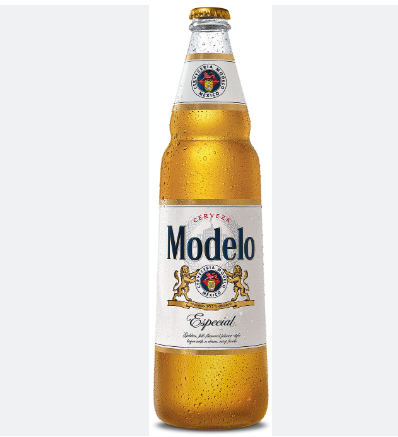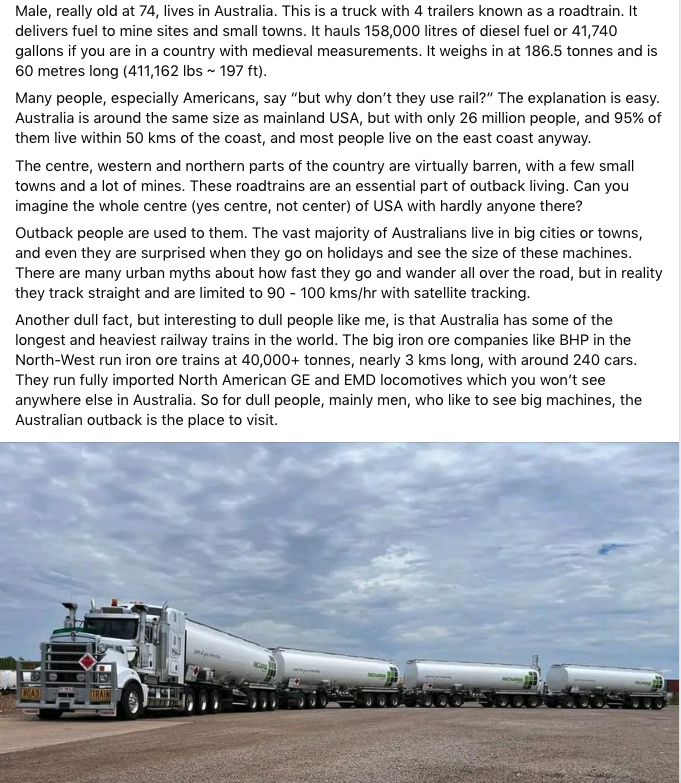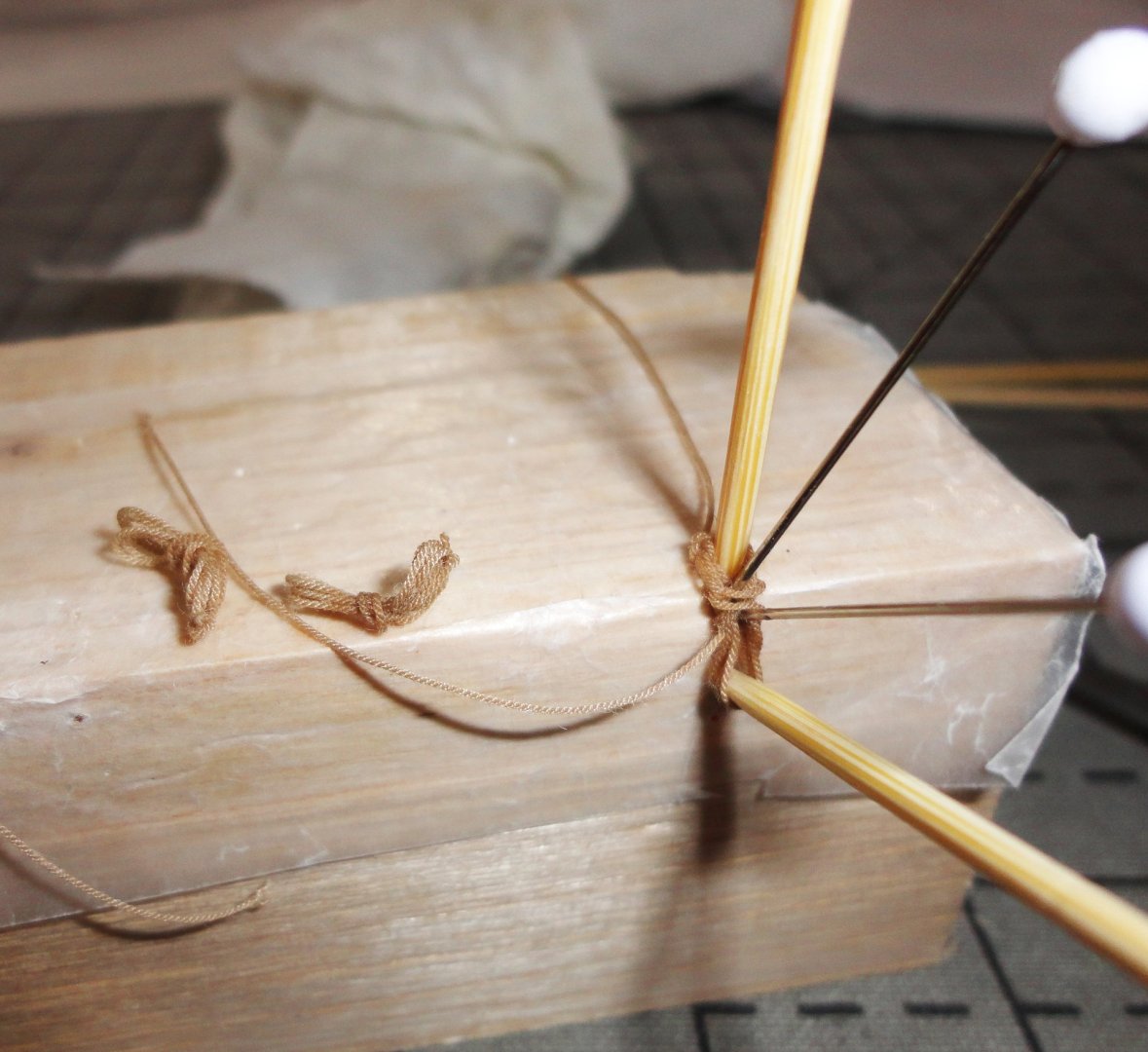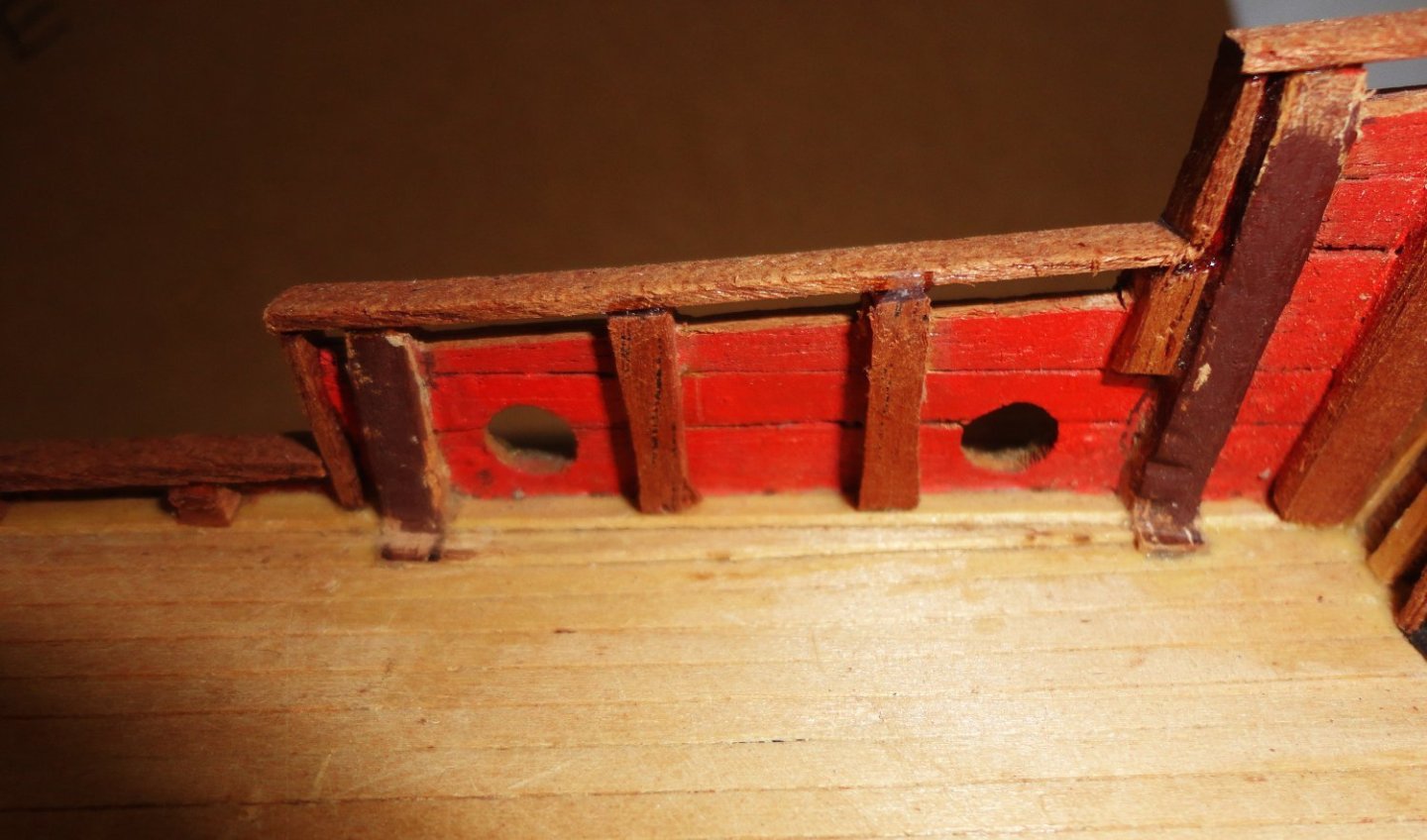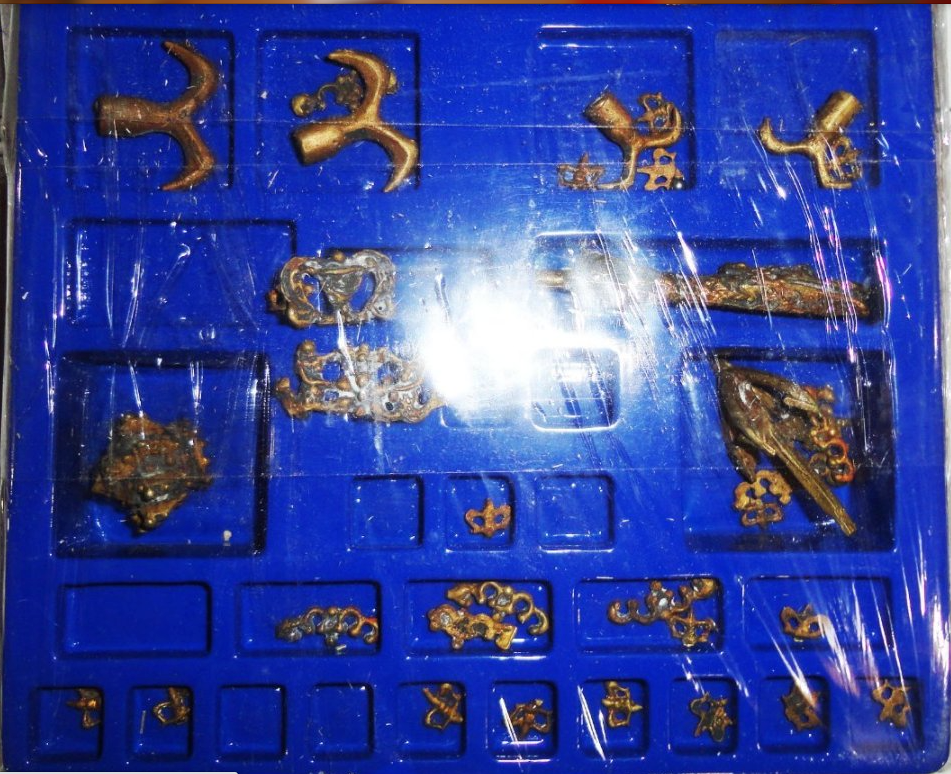-
Posts
1,012 -
Joined
-
Last visited
Content Type
Profiles
Forums
Gallery
Events
Everything posted by Snug Harbor Johnny
-

For Beginners -- A Cautionary Tale
Snug Harbor Johnny replied to ccoyle's topic in New member Introductions
-

Use of “other power tools”
Snug Harbor Johnny replied to kgstakes's topic in Modeling tools and Workshop Equipment
I suppose if one is TOTALLY exasperated with how a build is turning out, or perhaps a pet or toddler has inflicted enough damage that repairs would be impractical or badly show - you could use one of the 'other power tools' ... like tossing the model into the chipper/shredder. 😉 -
Its a plus that there are 'some' instructions in the Roar Ege kit (I just peeked into my stashed kit and saw that there is a booklet included ... didn't open the plastic wrapper to check it out) ... the 'vintage' Vasa (sold in the 70s as Wasa) in 1:100 had none, apart from a few sketches on the plan, which was printed on both sides. My Dad gave me the kit (fortunately he also bought the accessories kit that had cannons and fittings ... sold separately in those days), which was started through hull planking - on the 'assumption' that it was accurate (it wasn't then, but has been revised at least a couple times in the interim based on marine archeology). In recent years I've made some progress (and partial corrections) on the build (now suspended pending learning about rigging). The BEST 'instructions' are the builds available for perusal on MSW - and there are several for the Vasa. There are at least a couple for the Roar Ege, and no doubt if you study those you can avoid some pitfalls and also see what other builders have done to improve on what came in the box. As for text instructions from Einar Billing back in the day, a sheet (in several languages) was provided in my 'Wasa' kit. It included: "You are about to begin the exciting task of building a Billing Boat model, and I hope you will have many pleasant hours doing so. The most important point is that this kit is intended to be built, and not merely assembled. In consequence, you must not expect the parts to fit together perfectly - it will be necessary to exercise skill and imagination in the building of this kit. ... But thought and care should be exercised during construction ... after all, any child could put a puzzle together. ... I wish you a lot of success in building your model. Yours sincerely, Einar Billing." When life gives you a lemon, make lemonade ! Johnny
-
Another reason for my interest ... I have this kit in my stash (as well as the Billings Oseberg), since the early 'Vikingskibbe' version in kit form was far more challenging (although the prow and stern were 'built up' just like the original), since al the parts had to be cut out - and the veneer stock in my inherited kit was so dry, warped/rippled and splitting like crazy, everything would have to be made from scratch. Also, it was 1:20 scale - the Roar Ege AND the Oseberg are both 1:25 - sop can be displayed together. The Roar Ege will be built first to gain experience with this type of ship, and I plan anyway to test-fit the stakes first, modify, then remake in laminated walnut veneer I have in stock.
- 47 replies
-
- Roar Ege
- Billing Boats
-
(and 2 more)
Tagged with:
-
Why not build them "side-by-side" in one build log? Like Raggedy Ann and Andy dolls (sewn together holding hands), they'll never get separated. That is, future perusers might go through one log yet not see the other.
- 47 replies
-
- Roar Ege
- Billing Boats
-
(and 2 more)
Tagged with:
-
I'm with you, Keith - and am happy to do what I can when I can for as long as I can. With luck and Providence, there'll be some good years left. I'm learning to be 'one with the ship', insofar as old-time sailing ships were hand built machines with many parts. And there are VERY many parts, so sometimes we have to pick and choose what to include in our 'artwork' models.
- 32 replies
-
- Cutty Sark
- plastic
-
(and 3 more)
Tagged with:
-
I thought that flummoxed or discombobulated were similar ... in the U.S. there is "thrown for a loop", "knocked over with a feather", "mind boggling", "hit me like a ton of bricks", awestruck, "stopped me in my tracks", "made speechless", thunderstruck, dumbfounded, "set back on my heels", "took the wind out of my sails", "totally blew me away" ... or a favorite of mine - "turned my head like a one eyed dog in a meat factory".
-
'Finally settling for a uniform method that will look OK in 1:100 scale. In the picture below, there are extra quilting pins not needed ... a third toothpick is just teased under the coil to make it easy to wrap a line three times around the middle (high of center), it stays put but is still fixed with a dab of CA (as is the knot at the top). The short end at that knot is trimmed away (the long end having been used for wrapping the middle & its end is trimmed away after fixing with CA). I can do it now with just a pair of toothpicks on the balsa block protected by waxed paper. The bamboo toothpicks are given a slight twist before removing in case of adhesion, and the coil pops-off the waxed paper. I'm not seeing any discoloration from the small amount of glue being used (applied with the dental tool), and I like the instant drying that happens when the other end of the dental tool applies a touch of 'accelerator'. I figure on needing about 150 of these coils - each going to a belaying pin somewhere. So far I have ten made - leaving 140 to go !
-
Ah yes, its the 'wide bulkhead extension' problem that I ran into myself. Obviously 'seeing ahead' (like in a chess game) might have produced a countermeasure like pre-thinning those extensions early in the build - but that would have make them weaker and easier to break under pressure of planking. Then there is thinning after planking but before decking - a better idea. But then we are dealing with the problem of what to do if the hull was planked and decked with the original bulkhead forms ... like I did. One might not want to have an overly wide gunwale, then again, the false stanchions (bulwarks?) may look too small - that is, the vertical members should have a similar thickness. David's tapering idea from the bottom up leaves the gunwale as-is, then the puny false verticals could be picked or trimmed out and replaced by tapered ones that would look about the same as the bulkhead extensions that were tapered. The decking would be unaffected via that method. So what did I do? As pictured below, the bulkhead extensions were cut in straight down (rather than tapered, as perhaps should have been done). It does mess with the decking, yet the additions of cannons may distract from that (so I hope). A waterway plank was placed between the trimmed bulkhead extensions, then false verticals placed over that ... No going back now. Ship modeling is a learning experience and we all have to learn somehow.
-
Indeed, the only items missing may be the 2' x 3' wall poster of the finished model (not needed to build the kit, but perhaps a visual aid) and the castings set (pictured below - sorry for the camera flash in the middle). Most of the bits in there are fleur-de-lis ... which may be available on the secondary market - and are conjectural as decorations. The 3 key castings missing are; 1.) the monster head to go on the prow, 2.) the crown to mount on the bowsprit, and 3.) the grappling anchor suspended from the bowsprit - which might be available somewhere as a part (and some sort of crown may be as well). There are also the curved knives to mount on the fore and main course yards (supposedly to cut enemy rigging when drawing alongside in battle) - visible on the Anthony Roll, but those shouldn't be too difficult to model in some medium ... or simply left off. The rigging rope in my kit is on spools (and looks like scale rope), thus the lines pictured (if original to the kit) were re-wrapped on holders. The Sergal Great Harry kit can be built 'out of the box' to make a fine (if large) model 'as-is', but a few modifications to the castles might bring it more in line with present scholarship and marine archeology. My challenge was to translate the hull pieces from about 1:65 (provided) to 1:88 (with some corrections in hull lines based on the Mary Rose that has been preserved), to be compatible with the scale of the brass cannons in the kit - and also to build less of a 'beast' in terms of model size and case ultimately needed. Its all a matter of personal preference, and sometimes a larger presentation fits the scale of the environment in which it will be displayed.
- 3 replies
-
- Great Harry
- Henry Grace a Dieu
-
(and 2 more)
Tagged with:
-

What Wax To Use On Rigging Line
Snug Harbor Johnny replied to JFMJr's topic in Masting, rigging and sails
All things to nothingness descend, Grow old and die and meet their end, Man dies, iron rusts, wood goes decayed, Flowers fall, walls crumble, roses fade … Nor long shall any name resound Beyond the grave, unless 't be found In some clerk's book, it is the pen Gives immortality to men. (Author anonymous) -

Proxxon mini lathe verdict
Snug Harbor Johnny replied to Srenner's topic in Modeling tools and Workshop Equipment
There have been scams on the internet where known products are pictured, but with a 'lowball' price - sometimes as low as a tenth of what the item normally sells. It is advisable to research the product first, know the value then deal with a reputable source. ... Of course, a modeler selling-off stuff can often offer good condition used equipment or kits at a substantial discount. But other than that, it it seems 'too good to be true' - it likely isn't. -

What Wax To Use On Rigging Line
Snug Harbor Johnny replied to JFMJr's topic in Masting, rigging and sails
'Always knew you were a 'Renaissance man". -
I grew up in Maryland and remember the opening of the FSK bridge. Since then (now a Pennsylvanian), I've used it a number of times to avoid the tunnels or heavy traffic on the long western loop of the Baltimore beltway. 'Guess in the 70s, no one did a 'what if' scenario to cover this type of collision. Other bridge designers have considered this and built massive pier guards fore and aft strong enough to withstand a direct hit by a massive ship.
-
'Love the random-joint look of the decking ... likely how many decks were made from deck plank stock from the sawmill, where defects have to be cut out or warpage reduced - yielding planks of various lengths. These are cut, of course, so that the joint between running planks will center on a deck beam for securement - but there may be no detectable 'pattern' to the joints across the deck (at least not intentional).
- 31 replies
-
Your photo from below shows an open access in the bottom of the 'crows nest' ... so there's no need for a door - which was a guess, really (and that would have been awkward). The 'nest' appears to be an elongated barrel. So the climbing bars go right into the bottom. 'Not sure what there was to stand on, but the simplest arrangement would be that 2/3rds of the bottom was hinged (either there or one further up in the barrel), so that it could be flipped closed once inside. The taper of the barrel would keep the trap door from moving further than horizontal. Hmmm, gives new meaning to the old phrase, "Your turn in the barrel." 😉
-
I've been making my own scale rope with the Syren Rope Rocket. Some 'ordinary' Gutermann poly thread bought in a sewing shop made good rope without much 'shine'. 'Don't know if it Gutermann "E", as there is no letter designation on the bobbin. The fuzz is minimal. Using Mettler ploy thread had less shine, but more fuzz (still less than cotton) - but 'flashing it off' by QUICKLY passing the line over an alcohol flame in an old fashion glass burner. 'Guess that might work for cotton scale rope. Poly rope needs 'tempering' 5-7 min. at 350 degrees as part of the manufacture, so you can save yourself trouble with quality scale line form either Ropes of Scale or Syren - both good suppliers.
-
Aha, we were looking at the "kit review", which did not go into any building. I did start a Build log of 'Busting' the Sergal kit, and couldn't find it again ... until I stumbled on "content you've started" the code for the link I copied to paste below: Now you can see what I started to do with the Sergal kit, and there are more photos of kit contents. Louie was helpful in his comments. Now I have to get the box off the shelf and look at the contents again. Johnny
-
G'day mate, (don't know if they say that in New Zealand) ... Ah yes, the GH build in limbo right now. That's because I'm preoccupied with restoring an aprox. 70 yr. old 1:100 model of the Gorch Fock (and going very slowly & carefully with it) - mostly because I needed to learn more about rigging in general, and clipper rigging specifically. There is value in this, even though I'm realizing the difficulties of working in a somewhat smaller scale. Hmmm, and there is also the 1:100 Billings Vasa (circa 1970) also in my queue. Then again, Louie da Fly did a much smaller Great Harry (1:150 scale?) and did an incredible job ... all depends on ones motor skills, patience and determination - as there are many fine examples of exquisite work on MSW. Too bad the castings are missing, as they add a lot to the Sergal GH kit. I take it that all the guns are there, which are more important, and the bits in the blue shrink wrapped castings holder can be re-created in other materials with some fiddling. As noted in what was in the log, the cannons seem to be about 1:88 scale, versus about a 1:65 for the hull. I did not want to build the hull provided because 1.) it IS a bit large and would need very large case, and 2.) the smaller scale cannons peeking out of that big hull just wouldn't look right ... seriously, Henry didn't arm his ship with 'pop guns'. I did a lot of work re-scaling and making a 1:88 set of bulkheads plus intermediate decks. I did not like the way Sergal "interpreted" the fore and stern castles, so I re-designed those. I'll put on my 'to do' list making drawings (on a grid) of the revised1:88 bulkhead set for the GH, so anyone on MSW who wants to do a scratch build can screen capture the photos to be posted and print them. Scanning the big poster just can't be done - its a monster, but still attractive. I did not see any tubes in the kit, but will have another look just to be sure I didn't miss anything. For a mid 70s kit without the benefit of the Mary Rose recovery, it IS impressive - and I think still worth salvage ... you did such a good job on the L'Astrobabe. And indeed, one can still build the Sergal GH kit as provided (the frames are well done and fit OK) to make a REALLY impressive 'big model' - even with the inaccuracies in the castles. But the top structures on the stern can be omitted, and the forecastle modified somewhat to make the result closer to the Anthony Roll, and contemporary artist's interpretations of it - in light of recent archeology on the Mary Rose. The GH was her 'big brother'.
-
The solution seems evident, as form follows function. FIRST, one has to climb the futtock shrouds to reach the top mast shrouds mounted on the side of the top. You can just make out the ratlines on the futtock shrouds on the second picture, and this is almost universally the way to gain access to the next set of shrouds with ratlines (or horizontal bars, in this case). So one should use solid bars on the Endurance shrouds, but the ratlines on the futtock shrouds below have the characteristic 'sag' of rope ratlines (a small detail to note). SECOND, the man will move to the other side of the topmast shrouds (the inner face) - which one would do to stand on the top. It looks like there is a larger space between the decking on the top and the first climbing bar - so perhaps this is meant to pass under before climbing the inside. THIRD, one climbs up as far as the bars go (heres comes the tricky part, but not so hard for an able bodied seaman) then transfer to the climbing bars going up from the back of the top. This leads to the access door on the crow's nest (presumably hinged and secured with a latch - and opens inward), which is on the aft side of the crow's nest ... since it secured to the back of the top mast.
About us
Modelshipworld - Advancing Ship Modeling through Research
SSL Secured
Your security is important for us so this Website is SSL-Secured
NRG Mailing Address
Nautical Research Guild
237 South Lincoln Street
Westmont IL, 60559-1917
Model Ship World ® and the MSW logo are Registered Trademarks, and belong to the Nautical Research Guild (United States Patent and Trademark Office: No. 6,929,264 & No. 6,929,274, registered Dec. 20, 2022)
Helpful Links
About the NRG
If you enjoy building ship models that are historically accurate as well as beautiful, then The Nautical Research Guild (NRG) is just right for you.
The Guild is a non-profit educational organization whose mission is to “Advance Ship Modeling Through Research”. We provide support to our members in their efforts to raise the quality of their model ships.
The Nautical Research Guild has published our world-renowned quarterly magazine, The Nautical Research Journal, since 1955. The pages of the Journal are full of articles by accomplished ship modelers who show you how they create those exquisite details on their models, and by maritime historians who show you the correct details to build. The Journal is available in both print and digital editions. Go to the NRG web site (www.thenrg.org) to download a complimentary digital copy of the Journal. The NRG also publishes plan sets, books and compilations of back issues of the Journal and the former Ships in Scale and Model Ship Builder magazines.


